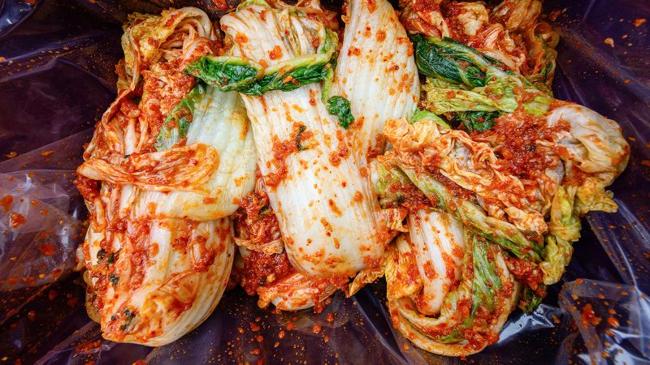Summary
But officials enforcing the no-liquids rule at South Koreas Incheon International Airport have been busy seizing another outlawed item: kimchi, a concoction of salted and fermented vegetables that is a staple of every Korean dinner table.
Source: CNN on MSN.com

AI News Q&A (Free Content)
Q1: Why was kimchi confiscated at South Korea's Incheon International Airport in 2022?
A1: Kimchi was confiscated at Incheon International Airport due to the enforcement of the no-liquids rule in carry-on luggage. Airport officials had to seize almost 11 tons of kimchi from passengers last year because the fermented vegetable dish contains liquid, which is restricted in carry-on bags according to international aviation security standards.
Q2: What are the primary ingredients and traditional preparation methods for kimchi?
A2: Kimchi is primarily made from napa cabbage or Korean radish, salted and fermented with seasonings like Korean chili powder (gochugaru), spring onions, garlic, ginger, and jeotgal (salted seafood). Traditionally, kimchi was prepared collectively by families or communities in a process called kimjang, and stored in large earthenware jars called onggi to maintain optimal fermentation conditions.
Q3: What are some health benefits associated with consuming lacto-fermented foods like kimchi?
A3: Lacto-fermented foods like kimchi are rich in bioactive compounds such as lactic and acetic acids, phenolic compounds, and beneficial live microbes. Studies suggest these foods can offer health benefits, including improved gut health, enhanced immune function, and potential anti-inflammatory effects. However, proper production methods are crucial to minimize risks of foodborne illnesses.
Q4: How do variations in mixing during fermentation impact the flavor and aroma of fermented foods?
A4: Variations in mixing during fermentation significantly influence the physical, chemical, and microbial interactions within the process, affecting the sensory characteristics like flavor and aroma. Controlled mixing can optimize the release of desirable flavor compounds, enhance biosynthesis yields, and simplify technological complexities in the fermentation of foods such as bread, yogurt, beer, and kimchi.
Q5: What are some potential risks associated with consuming improperly prepared fermented foods?
A5: Improperly prepared fermented foods can pose risks of foodborne illnesses and exposure to undesirable compounds like biogenic amines. Ensuring safe fermentation practices, including the use of starter-culture strains and controlled production protocols, is crucial to minimize these risks while maximizing health benefits.
Q6: What innovative techniques are being used to monitor fermentation processes in food production?
A6: Recent studies have explored various sensor-based techniques to monitor fermentation, including electrical impedance, pH, optical transparency, and carbon dioxide concentration measurements. These methods provide a comprehensive framework to understand and optimize fermentation dynamics, which is essential for improving product quality and consistency in the food industry.
Q7: How does kimchi contribute to the cultural and culinary heritage of Korea?
A7: Kimchi is a staple in Korean cuisine, deeply embedded in cultural traditions. It is not only a common side dish with almost every Korean meal but also a part of communal activities like kimjang. Kimchi reflects the Korean spirit of communal sharing and seasonal preparation, signifying its importance beyond just a dietary staple.
References:
- Lacto-Fermented Fruits and Vegetables: Bioactive Components and Effects on Human Health
- Impact of Mixing on Flavor and Aroma Development in Fermented Foods
- Kimchi refrigerator





